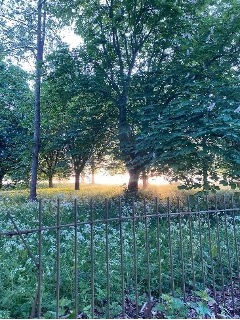Hidden in plain sight: Odds and ends around Oxford
- TOG

- Mar 27, 2022
- 2 min read
By Dineo Serame
Oxford is the kind of city that announces itself in its architecture. You know you have truly arrived when you look at the majestic Radcliffe Camera. Though the ‘Square of Awe’, as I call it, has the famous Rad Cam, Sheldonian Theatre, Bodleian Library, Bridge of Sighs, and University Church, some of Oxford’s more ‘interesting’ treasures are hidden and tucked away. They don’t demand attention as much but understanding why they make Oxford what it is will put a smile on your face.

1. Tiny/Fairy Doors of Oxford
Reports say these tiny doors were probably created by an artist group called ‘Dinky Doors’. The group started in Cambridge putting up miniature doors mimicking the real-life doors of 10 Downing Street. The idea behind their project is to ‘open doors of hope to other worlds.’ In Oxford these doors have been spotted in Little Clarendon Street, the bottom of Cornmarket Street, and by Merton Grove, next door to Merton College. Be on the lookout for these mystery doors.

2. Post Boxes Around Oxford
My partner and I treat every walk in Oxford as an adventure. We realized that there are
different cyphers on postboxes in Oxford and researched about what they mean. It could’ve easily become a competition to see who spots more post boxes, but I would’ve won that one (competitiveness aside, after seeing the tiny doors I’ve been very observant of my environment). Cyphers include, but are not limited to:
Cypher
Meaning and location
ER II
The most common letter boxes have the cypher of the current monarch, Queen Elizabeth II (1952 – present). Pillar boxes of this style can be found in Keble Road and London Road.
GR VI
These boxes carry the cypher of King George VI (1936 – 1952), and date from the start of his reign. You can find a pillar box with this cypher in London Road, Headington and a wall box in Turl Street.
VR
The oldest of these pillar boxes carry the cypher of Queen Victoria (1837 – 1901) and can be found in Park town. I’ve also spotted these in George Street and the Covered Market.

3. Commemorative Plaques
Oxford has been the site of some major moments and discoveries throughout history. The sites of some of these events are commemorated in small plaques that can be found around town. Some plaques I’ve noticed on my walks include:
· Boyle & Hooke’s Plaque on the wall of University College
There used to be a house called Deep Hall on this site where Robert Boyle lived. While living here he discovered Boyle’s law (PV= k) using his assistant Robert Hooke’s vacuum pump.
· Birthplace of King Richard I and King John
Near the west end of Beaumont Street there used to be a house known as Beaumont Palace. On this site, King Richard I ‘The Lionheart’ was born in 1157, and his successor King John (during whom’s reign the Magna Carta was signed) was born in 1167.






Comments